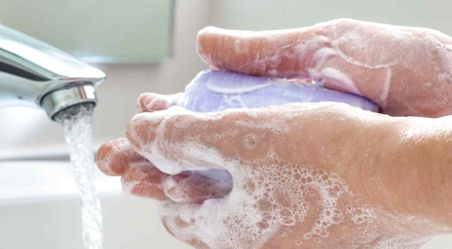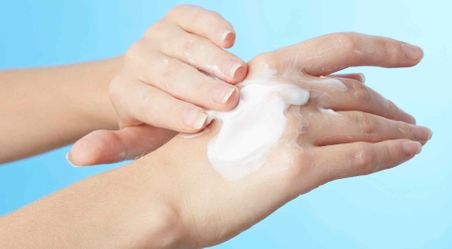Gloves should be worn when handling
- Corrosive materials
- Hazardous materials
- Materials with sharp/rough edges
- Toxic chemicals
- Very hot or very cold materials
Glove Selection Guidance
There is wide range of work carried out in College and no single glove will meet the needs of every scenario. Gloves must be selected on the basis of the materials being handled and the type of work undertaken. Potential skin problems can include allergic reactions, friction from extremes of heat, chemical absorption and contamination.
There are several ways of avoiding or reducing harm which include training in the correct use of chemicals or irritants used during work. Always follow the skincare advice listed below. For futher information on glove selection please visit the safety webpage.
Ways to avoid or reduce harm to skin

Avoid
Skin contact with wet work, direct contact with irritants or sensitizers and wear gloves when necessary. Your skin should be clean through good hand washing and thorough drying techniques.

Barrier
Emollient creams (e.g. Vaseline, Diprobase) should be used, frequently coupled with regular changes of appropriately selected gloves.

Monitor
Check hands regularly for the signs of itchy, dry or red skin. Report any problems to your Safety Officer or the Occupational Health Service. Early assessment can help avoid more significant and long standing problems.
Frequently asked questions
- What gloves should be worn in a microbiological containment level 2 and 3 laboratory?
- Why is a glove with a shorter breakthrough time sometimes given a better rating than one with a longer breakthrough time?
- Why should I wear disposable gloves for handling food?
Nitrile gloves should replace latex gloves in Containment Level 2 and 3 laboratories because they can provide adequate microbiological protection whilst preventing occupational exposure to latex. Nitrile gloves also offer better protection against many of the chemicals used in these laboratories. There may however be certain circumstances under which powder-free latex gloves are the better choice. These include:
- Tasks requiring high levels of manual dexterity or precision
- If sharps are in use
- Where there is a risk of gloves snagging e.g. handling live animals
- Where double-gloving is required as a control measure.
If latex gloves are used then the following actions will need to be completed in accordance with College Policy;
- The risk assessment for the work must document the justification for selecting latex.
- You should check whether anyone working in the laboratory is allergic to latex. If anyone is, then advice from the College OH Service should be sought before adopting latex gloves
- All users must be provided with information on latex allergy and the need to report possible symptoms to the College OH Service
- Users must be aware of the limitations of latex gloves, in particular their susceptibility to damage by some solvents or disinfectants (e.g. 70% ethanol)
- Only those latex gloves fulfilling the quality criteria specified in the policy can be used.
The risk posed by a chemical permeating a glove related not just to the speed at which it can diffuse through, but the flow rate also. A combination of a short breakthrough time and a low permeation rate may expose a glove wearer to less chemical, than a combination of a longer breakthrough time and a much higher breakthrough rate, if the glove is not changed frequently enough.
Disposable gloves help protect the food from contamination by catering staff. If gloves are worn on clean hands and changed properly, they can significantly reduce the risk of cross contamination leading to food-bourne illness.